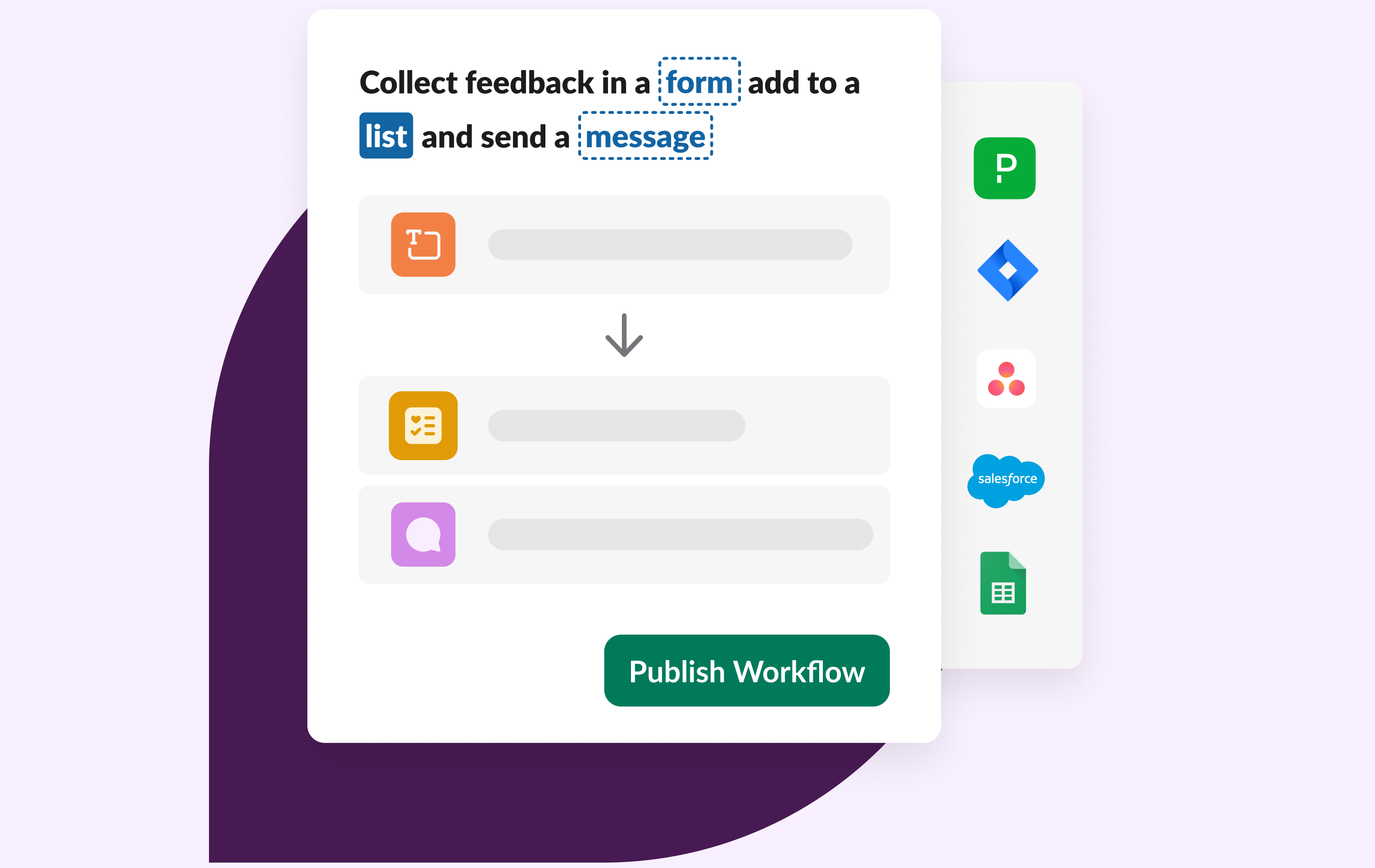 APPS
APPS
 APPS
APPS
 APPS
APPS
Slack Technologies Inc. today introduced new features for Workflow Builder, the company’s easy-to-use tool that helps automate tasks and processes for teams and organizations.
The new features include plug-and-play workflow templates, enhanced developer tools and new ways to connect to third-party apps such as PagerDuty, Asana and Bitbucket. The vision is to provide more accessible, no-code automation to nontechnical users.
Historically, Slack had apps provided by big developers and supplied in a way that interacted with chat channels as a contained experience. However, the company wanted a way users could build their own connected experiences and move away from the “big app” notion, and thus Workflow Builder was born in 2019.
“Traditionally, if you look at automation tools, they’re kind of buried in the world of IT,” Rob Seaman, chief product officer at Slack, told SiliconANGLE in an exclusive interview. “And end users can’t use them, and IT gets swamped, therefore a lot of things that could be automated don’t even get attempted. From a user perspective, this powerful capability is now in your hands. From a company perspective, you’re ultimately going to get more productive employees.”
According to internal customer success metrics reported by Slack, 80% of users who build Slack workflows are nontechnical. To enhance their experience, Workflow Builder now offers an easy plug-and-play workflow creation capability that Seaman described as a “Mad Libs” style approach.
So, instead of building a workflow in a visual diagram that might get convoluted or difficult to follow, users can insert missing words and phrases into a declaratory sentence describing the nature of the task they want to be done.
“We’ve also introduced tens of templates for common use cases that we see amongst our customer base that will allow you to basically pull one down from a catalog like you might see from Notion or Air Table or something like that, and get started from, a starting point that isn’t just a blank slate,” Seaman said.
Examples of templates include adding teammates to relevant meetings as they join, sharing important documents and sending welcome messages. Incident response can be streamlined using a simple template to set up incident details, create a channel for the proper team members to handle the issue and log the details from the management tool such as Jira Cloud for progress tracking.
Workflow automation can now be triggered by many more third-party apps outside of Slack. Previously, a Slack workflow could only start from an action that took place in Slack or Salesforce. Now, they can initiate from events triggered in numerous apps. That would be useful in the incident response example, where a team is dealing with a critical app failure. A PagerDuty event could trigger a no-code workflow built in Slack and create an incident channel, add team members and populate the relevant details. That would allow the team to hit the ground running.
As for advanced users, Slack has added new tools to its developer platform using the company’s open application programming interface to make it easier to build custom steps to allow them to go from idea to development faster. That includes creating and managing custom steps on the Slack app settings page, hosting steps anywhere and enhancing custom-built Slack apps, such as bots, so that it can be connected to Workflow Builder.
Support our mission to keep content open and free by engaging with theCUBE community. Join theCUBE’s Alumni Trust Network, where technology leaders connect, share intelligence and create opportunities.
Founded by tech visionaries John Furrier and Dave Vellante, SiliconANGLE Media has built a dynamic ecosystem of industry-leading digital media brands that reach 15+ million elite tech professionals. Our new proprietary theCUBE AI Video Cloud is breaking ground in audience interaction, leveraging theCUBEai.com neural network to help technology companies make data-driven decisions and stay at the forefront of industry conversations.